The Maker Faire 2019 is now taking place in San Mateo, California, United States, and Arduino has made an habit of announcing new products during the events. This year is no different as the company has announced a new Nano Family with four boards:
- Arduino Nano Every powered by a Microchip ATMega4809 AVR microcontroller
- Arduino Nano 33 IoT with secure internet connectivity thanks to a U-blox ESP32 WiFi module and ATECC608A HW crypto chip
- Arduino Nano 33 BLE with Bluetooth connectivity via U-blox NINA B306 module based on Nordic Semi nRF52840 Bluetooth 5.0 chip
- Arduino Nano 33 BLE Sense with a design similar to Nano 33 BLE but some extra on-board sensors.
Arduino Nano Every
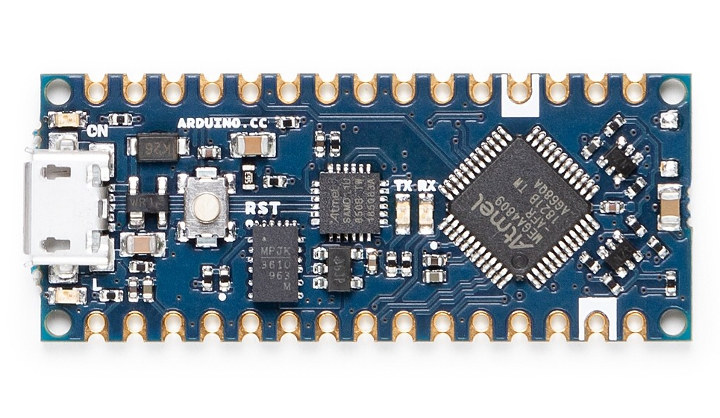
Specifications:
- MCU – Microchip ATMega4809 AVR microcontroller @ 20 MHz with 48KB flash, 6KB SRAM, 256 Bytes EEPROM
- USB to Serial via Microchip ATSAMD11D14A Arm Cortex-M0+ USB MCU
- 2x 15-pin expansion headers with GPIO, SPI, I2C, USART, PWM, ADC, DAC, reset, and power signals (+5V, +3.3V, GND, Vin, AREF, …)
- Dimensions – Compatible with original Arduino Nano
The board is sold without or with headers for respectively $9.90 and $11.90.
Arduino Nano 33 IoT
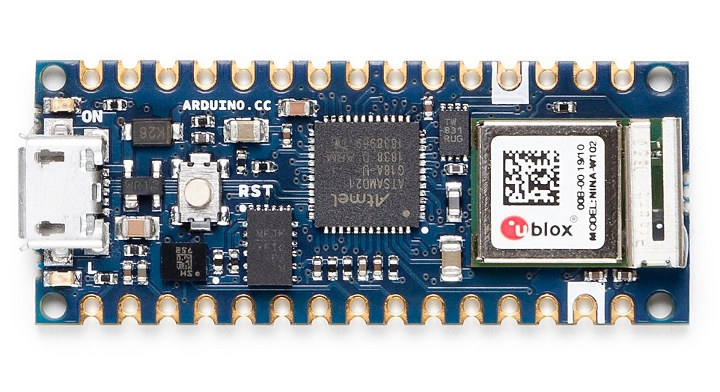
Specifications:
- MCU – Microchip SAMD21G18A Arm Cortex-M0+ microcontroller @ up to 48MHz with 256 KB Flash, 32KB SRAM
- Wireless Module – NINA W102 ESP32 WiFI + Bluetooth module connected to SAMD21 microcontroller with an SPI BUS and a serial port
- Expansion – 2x 15-pin expansion headers with GPIO, SPI, I2C, USART, PWM, ADC, DAC, reset, and power signals (+3.3V, GND, Vin, AREF, …)
- Sensor – 6-axis accelerometer and gyroscope
- HW Security – Microchip ATECC608A cryptochip
- Debugging – Via micro USB port, and 6-pin solder pads (SWD)
- Dimensions – Compatible with original Arduino Nano
Arduino Nano 33 IoT is compatible with the Arduino IoT Cloud and supports full TLS secure transport thanks to the built-in cryptochip that stores the cryptographic keys in hardware.
The board is also sold with or without headers for respectively $20 and $18.
Arduino Nano 33 BLE
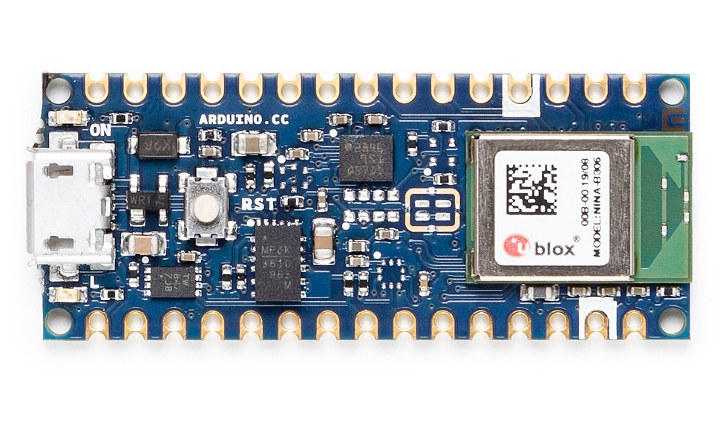
Specifications:
- Wireless Module – U-blox NINA B306 module powered by Nordic Semi nRF52840 Arm Cortex-M4F microcontroller @ 64MHz, 1MB Flash, 256KB
RAM, Bluetooth 5.0 LE connectivity - Expansion – 2x 15-pin expansion headers with GPIO, SPI, I2C, USART, PWM, ADC, DAC, reset, and power signals (+3.3V, GND, Vin, AREF, …)
- Sensors – 9-axis accelerometer, gyroscope, and magnetometer
- Debugging – Via micro USB port, and 6-pin solder pads (SWD)
- Dimensions – Compatible with original Arduino Nano
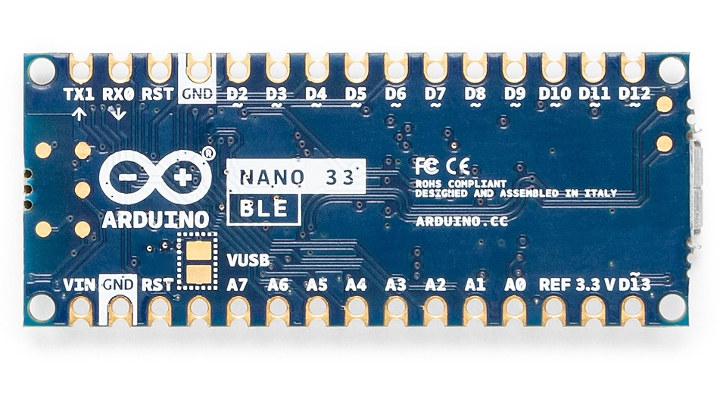 Nano 33 BLE has a reduced power consumption compared to other boards with the same size and as such allows the design of wearable devices and movement sensing projects. The board is also said to be ideal for automation projects thanks to the multiprotocol BT 5.0 radio.
Nano 33 BLE has a reduced power consumption compared to other boards with the same size and as such allows the design of wearable devices and movement sensing projects. The board is also said to be ideal for automation projects thanks to the multiprotocol BT 5.0 radio.
Arduino Nano 33 BLE is sold for $19 or $21 depending on whether you need the headers with your board.
Arduino Nano 33 BLE Sense
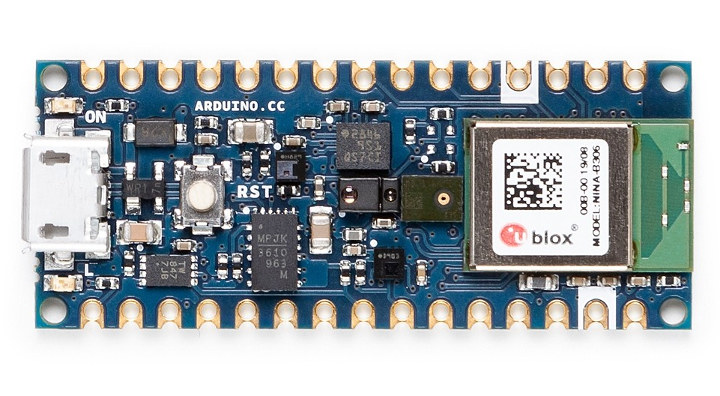
Arduino Nano 33 BLE Sense is basically the same as Nano 33 BLE save for the extra sensors and hardware security:
- Wireless Module – U-blox NINA B306 module powered by Nordic Semi nRF52840 Arm Cortex-M4F microcontroller @ 64MHz, 1MB Flash, 256KB
RAM, Bluetooth 5.0 LE connectivity - Expansion – 2x 15-pin expansion headers with GPIO, SPI, I2C, USART, PWM, ADC, DAC, reset, and power signals (+3.3V, GND, Vin, AREF, …)
- Sensors – 9-axis accelerometer, gyroscope, and magnetometer, temperature, pressure, humidity, light, color, gestures sensors, digital microphone
- HW Security – Microchip ATECC608A cryptochip
- Debugging – Via micro USB port, and 6-pin solder pads (SWD)
- Dimensions – Compatible with original Arduino Nano
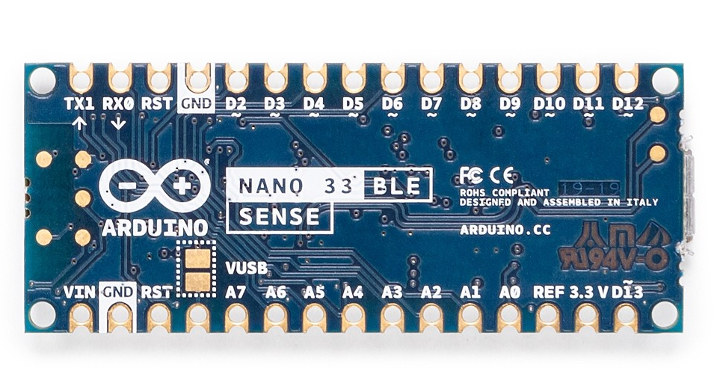 The board is also designed for automation projects and wearables with added interactivity thanks to the extra sensors.
The board is also designed for automation projects and wearables with added interactivity thanks to the extra sensors.
Arduino Nano 33 BLE Sense sells for $29.50 without headers, and $31.50 with headers.
You’ll find all four new Arduino Nano boards for pre-order on Arduino Store with first delivery expected for mid June for Every and 33 IoT models, and mid July with the Bluetooth LE boards.

Jean-Luc started CNX Software in 2010 as a part-time endeavor, before quitting his job as a software engineering manager, and starting to write daily news, and reviews full time later in 2011.
Support CNX Software! Donate via cryptocurrencies, become a Patron on Patreon, or purchase goods on Amazon or Aliexpress





It seems that Arduino wants to change and mature and expand to the market that is not only for home makers and hackers. And this a good and a bad thing at the same time. For example the Arduino API is great for prototyping small stuff with the current basic hardware. But these boards now have more complicated hardware and target a different market. Most probably this market doesn’t really need an Arduino IDE, which is crap and also doesn’t really need the whole API that comes with it. I suspect that at some point the core independent peripheral that… Read more »
Why would this be too complicated? It just another solution compared to the esp8266/32. Wifi and bluetooth are very handy to have for projects. And being able to use the Arduino IDE makes it easy to program for it. They still sell their other designs, it’s just an add-on to the excisting products. I’ll certainly buy a few. Too bad the wifi one’s are only 3.3V and not 5V. There are multiple ways to program Arduino’s. You don’t need to use the Arduino IDE. It’s just easy to use. You could use Atmel Studio if you want something more professional.… Read more »
It is like the esp32, but 3 times more expensive.
What the point of using a samd11 for usb to serial and a ATMega4809 for the workload?
Completely agree the SAMD11 has more ram and can have more flash… (and is the same CPU-wise a SAMD21) so that board is quite silly.
The three other boards don’t support 5V I/Os, so maybe that’s why.